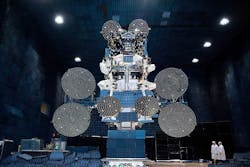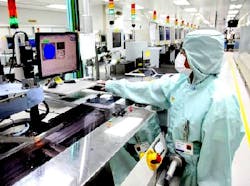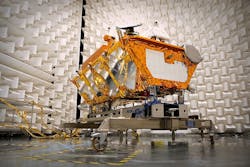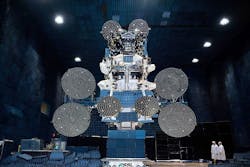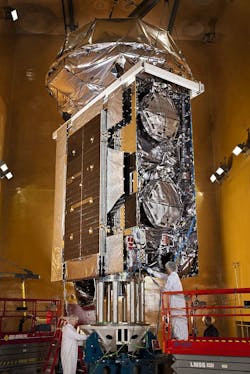COTS in space: Addressing obsolescence, part I
ByDan Friedlander
Retired following 44 years in component engineering
A component becomes obsolete when the original component manufacturer stops marketing it. Electrical, electronic, and electromechanical (EEE) components obsolescence hits the military, space, and commercial market. In the military, massive EEE components obsolescence occurred due in part to manufacturers’ decisions to leave or reduce activities in this market. For reasons not immediately understood, the military often uses phrase "diminishing manufacturing sources" rather than the term "obsolescence".
In the commercial market, due to the high dynamics in technological development and due to consumer demand, the availability period of commercial off-the-shelf (COTS) components is often shortened.
As the space and military technology community insert more open architectures and COTS technology, the challenge of managing the obsolescence that comes with COTS will only become more difficult.
Candidate COTS components for space applications constitute only one subset of the COTS population, used mainly in consumer electronics. Consequently, the potential user of COTS for space should carefully assess the mechanism of obsolescence in context with space applications. Obsolescence, by no means, should be considered a "showstopper" of any application; it is an obstacle to be overcome.
This article addresses the need for obsolescence issue understanding as an obstacle in a series of obstacles to be overcome to go for the inevitable use of selected COTS in space applications.
The obsolescence mechanism
A component becomes obsolete when it is no longer manufactured, either because demand has dropped to low enough levels that it is not practical for manufacturers to continue to make it, or because the materials, processes, or technologies necessary to produce it are no longer available.
That means that a component becomes obsolete not because is less reliable, less qualified, reached the wear out phase or other technical reason. Often, products are replaced not because they have broken but because they have fallen out of style, overrun by innovation.
There is a strong argument used often by the MIL/space party, emphasizing the correct difference between COTS products life (two to five years) vs. military system service life (25 to 50 years at platform level).
The above argument is intended to question the suitability and the availability of COTS components use in long-term applications (e.g., space and military). Those figures help to dramatize their claim.
There is a high likelihood of a life-cycle mismatch between parts and products, in both directions. When a COTS product becomes obsolete, it does not necessarily mean that its content (components) is obsolete, as well. The same component used in the subject obsolete or "outdated" product may be used in other still-available products. In some cases, they may be using some average values to dramatize their claim.
Moreover, I doubt whether those promoting the idea that product life reflects the components’ life have full visibility on the relevant components list. Also, claims regarding observed failures prove poor reliability. Often, even the maintenance service people, such as maintenance technicians, do not need to be familiar with the identity of the relevant individual components. They just replace the entire product or an entire subsystem. The term "failure analysis" is not in their lexicon. Consequently, root of the failure cannot be attributed to COTS electronic components or workmanship or.....
The majority of the consumers do not give in to the serial new COTS products offers; they continue to use the "old obsolete product" successfully for many years. Even in the consumer electronics domain, the newer product designs do not start from scratch. One does not need to resort to major design changes (vs. the old version) to raise the appetite of the customers to buy the new product and throw out the old one.
It is not clear how it can be concluded from product life figures that selected COTS are not suitable for use in long-term applications. In view of the global electronic components market status, who can claim that the MIL/space availability security is better than the COTS one and will stay as-is? With MIL/space components having a very small share of the total component market, their future is far from assured.
The availability parameter is definitely considered critical in the component/component manufacturer selection process for space applications. The one who makes the obsolescence business decision is the component manufacturer.
Following is the mechanism leading to obsolescence in the dominant consumer electronics, with obvious impact on space/military.
The consumer’s hunger for more functionality and ease of operation pushes R&D staffs to innovate, making their innovations a primary competitive factor. At the same time, consumer demand requires that the latest and best advancements be integrated into devices as rapidly as possible. The component manufacturer, benefiting from the technological development and motivated businesswise, produces new advanced products. Obsolescence is in large part a response to consumer demand for a continual flow of electronic products that offer new capabilities and features. Additionally, the consistent upgrading of products helps stimulate the economy.
Read COTS in space: Addressing obsolescence, part II online.
Author biography
The author, Dan Friedlander, graduated Engineering School/Tel Aviv University with a degree in physics (1965-1969). He has 44 years of experience in Component Engineering at MBT/Israeli Aerospace Industries (1969 to 2013), as Head of Components Engineering. As such, he was responsible for all aspects of EEE components – including policymaking, standardization at corporate level, approval, etc. – for military and space applications. Now retired, Friedlander is an industry consultancy (2013 to present). For further details on his experience, visit https://www.linkedin.com/in/dan-friedlander-63620092?trk=nav_responsive_tab_profile
The go-to resource for Intelligent Aerospace technology news & information:
Covering key topics
Across all market segments
Subscribe to the free Intelligent Inbox e-newsletter: http://www.intelligent-aerospace.com/subscribe.html.
Connect on social media:
Keep pace with aerospace innovation and opportunities via your favorite social media channels. Connect with Intelligent Aerospace on Twitter (@IntelligentAero), LinkedIn,Google+, and Instagram.
